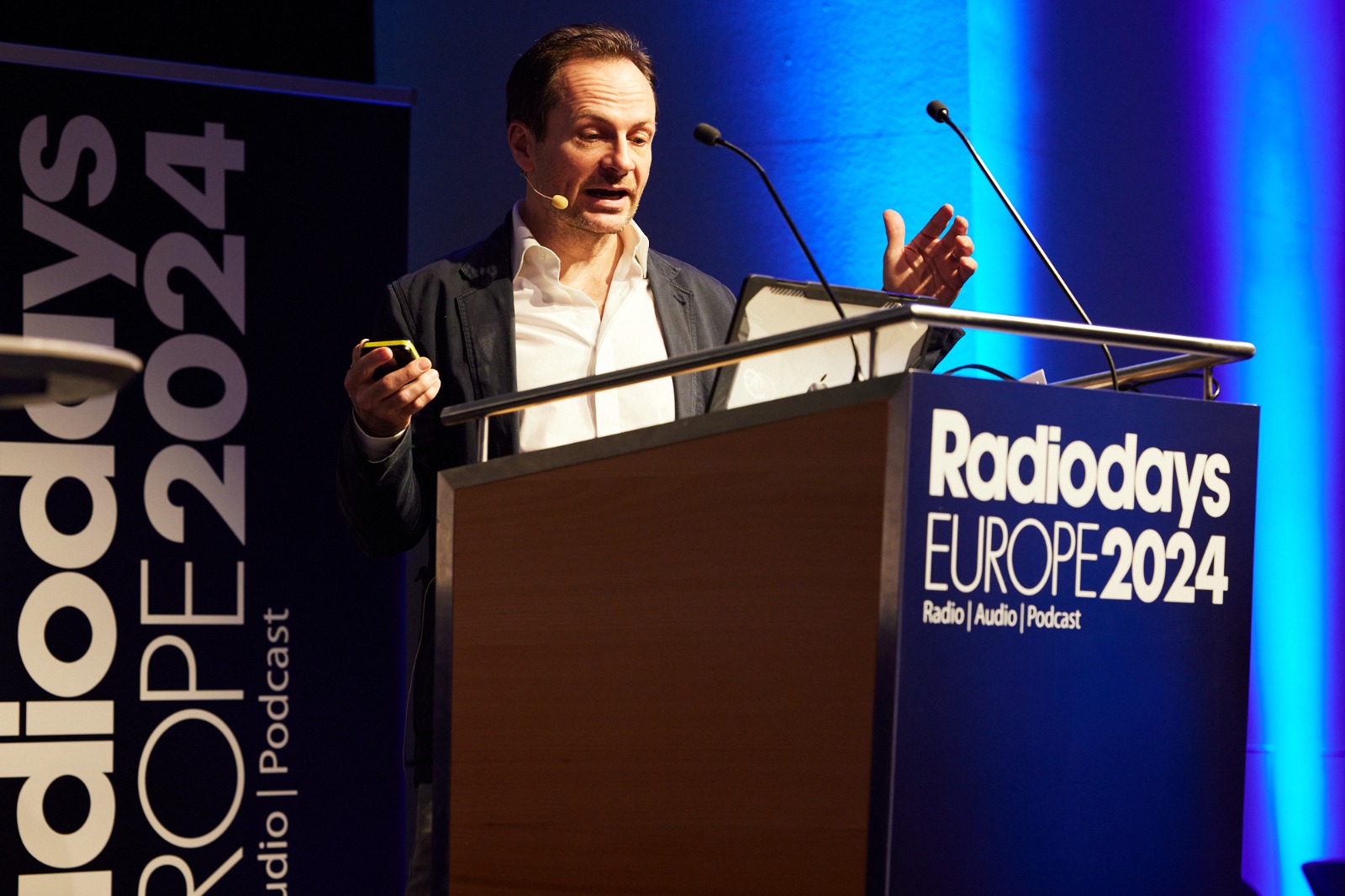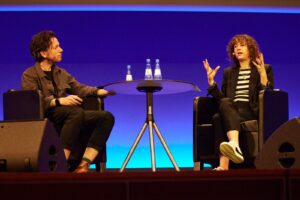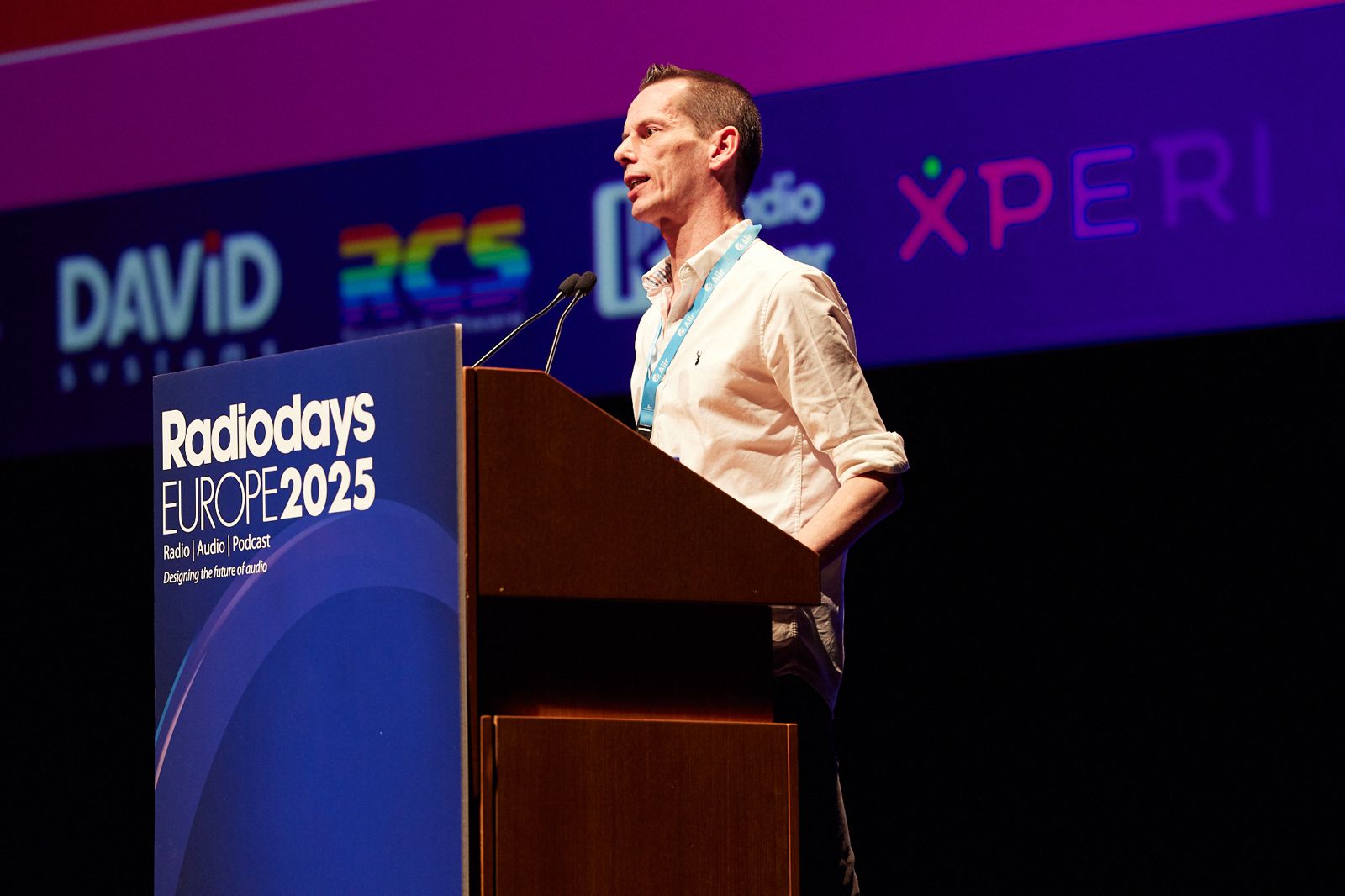
Audio, Video, Discourse
A growly voice, a pinch of humour and confidence in heaps. Brett Spencer of Spiritland Productions definitely knows how to spellbind the room and not let it go. It is all the more fitting that he confronts the audience with two twisted questions: What was the last time you have watched a podcast? And what was the last time you have listened to a video? Those different formats keep intertwining more and more and it can be said we’re well past the dawning days of podcasting.
Almost as to illustrate his and fellow Spiritland colleague Andy Wood’s point, videos, sounds and stylised text come in spades as the two speakers take us on a cross-medial journey. Visual podcast is the name of the game this panel – a format that deftly intertwines the arts of filmmaking and podcasting. While the existence of it isn’t exactly new, its widespread acceptance and particularly it actually airing on TV most definitely is. The feedback on “The Traitors”, for instance, has been overwhelmingly positive: “We wanted it to feel like the audience was looking in on the recording of the podcast”, says Andy Wood, also being the director of “The Traitors”.
Of course, this doesn’t sweep audio podcasts clean off the table. As long as audiences’ expectations and wishes can be met and their curiosity quenched, the base is there. But: There’s also a substantial amount of artistry in the creation of any type of podcast. A visual podcast is not just a video with the audio also being recorded. An audio podcast isn’t inconsequential dialogue caught on tape. For Spencer the combination ought to be tasteful: “There is an audience that will listen to audio, an audience that will watch videos – and there’s an audience that will do both”. Wishing to wed those spheres seems to fit right into our stimulus-craving Zeitgeist.




